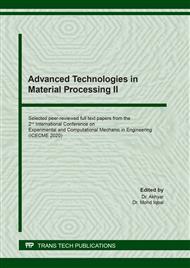p.1
p.10
p.17
p.25
p.36
p.43
p.51
p.59
Mapping Corrosivity Steel Construction at Atmospheric Conditions in Langsa Town Center and Palm Oil Mill Industry
Abstract:
Corrosion is one of the main causes of early failure of infrastructure both for public housing facilities and public facilities in downtown Langsa. This corrosion is caused by air pollution generated from motor vehicle and household industry exhaust fumes and exhaust smoke from the nearest palm oil mill industry from the city of Langsa. Related to air pollution, its sustainability should be a concern regarding environmental impacts that occur, one of which is atmospheric corrosion. This study aims to analyze the impact of the effects of pollution on infrastructure corrosion on construction steel which is often used on infrastructure in the city of Langsa and the palm oil mill industry. There are five types of steel model infrastructure consisting of strips of plate steel, elbow steel, cylinder steel, plate steel, and low carbon steel market have become specimens. Calculation of corrosion rate using the method of mass loss by reference to ASTM standard G50, the location selected above buildings in downtown Langsa and palm oil mill industry. The results of the study for one year showed the level of corrosion rate that occurred in 5 types of steel construction is still relatively safe or its relative corrosion resistance can be classified in the outstanding category (<1 mil per year). The conclusion is that 5 types of construction steel that have been tested, are resistant to corrosion, and are suitable for use as the main construction material in Langsa City and the palm oil mill industrial environment.
Info:
Periodical:
Pages:
25-35
Citation:
Online since:
July 2021
Authors:
Price:
Сopyright:
© 2021 Trans Tech Publications Ltd. All Rights Reserved
Share:
Citation:


